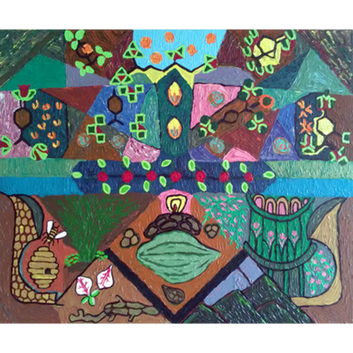RadhikaRani
Painter, Poet,photographer
Create Your First Project
Start adding your projects to your portfolio. Click on "Manage Projects" to get started
Spices
Project type
paintings
Date
september 2019
Location
Kollam
This body of work explores the profound impact of the spice trade on the world. Inspired by historical figures like Vasco da Gama and Christopher Columbus, who embarked on voyages in search of exotic spices, my own journey began with studying the history of mathematics. This series originated from my research on Boothya Sankhya slokas, where I encountered the fascinating problem of permutations and combinations related to creating different "rasa" (flavors) using six basic tastes.
I also approached this series from a woman's perspective, considering how one might decide what to cook based on the available ingredients in her kitchen. In the Susrutha Samhita, 63 possible combinations are explained from a mixture of six rasas, and Sridhar Acharya in Patiganita provides a similar example:
Katukathiktha kasahaayaamla lavana madhurai sakhe rasai shadbhi,
vidahaathi soopakaaro vyanchanamaachakshva kathibheedham
Translating to: "The cook prepared varieties of food with six savors—pungent, bitter, astringent, acid, saline, and sweet. What will be the possible numbers of varieties of food that can be made with these flavors?"
With each of the six savors, there are basic combinations: two combinations yield 15 types, three yield 20, and so on, reflecting the application of permutations and combinations in daily cooking. The limited herbs and spices we have can still make a significant impact on our dishes.
My journey of my spice series was enriched by the spices grown in my own kitchen garden—cinnamon, black pepper, chili pepper, garlic, ginger, cardamom, mustard, turmeric, coriander, and fenugreek. This connection to nature underscored my belief that everything is intertwined, adding to the beauty of living in harmony with nature.
Spices, which can be seeds, fruits, roots, rhizomes, bark, or other plant substances, primarily enhance the flavor and color of food. Other parts of spice plants are used as herbs, such as leaves, flowers, or stems for flavoring or garnishing. In Ayurveda, spices are also used in medicinal ingredients, religious rituals, cosmetics, and perfumes. Truly, spices and their plants enrich our lives in every conceivable way, becoming an integral part of our daily existence.





























